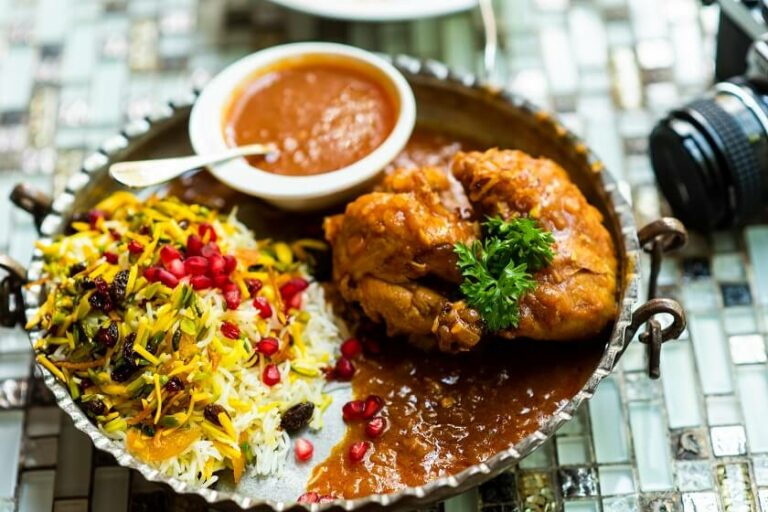Introduction: Iranian cuisine and its diversity
Iranian cuisine is as diverse as its culture and history. The cuisine of Iran is a blend of herbs and spices, meats and vegetables, and grains and fruits. Iranian cuisine is known for its use of saffron, pomegranate, and pistachios. Iranian cuisine is also famous for its kebabs, stews, and rice dishes.
The importance of neighboring countries in Iranian cuisine
Iran shares borders with several countries, including Turkey, Iraq, Afghanistan, Pakistan, Armenia, and Azerbaijan. These neighboring countries have influenced the cuisine of Iran over the centuries. The trade and exchange of goods and ideas have played a significant role in the development of Iranian cuisine. The influences of neighboring countries can be seen in the ingredients, spices, and cooking methods of Iranian cuisine.
Turkish influence on Iranian cuisine
Turkey has had a significant impact on Iranian cuisine. Turkish cuisine has influenced Iranian cuisine, especially in the use of spices and herbs. Turkish dishes such as kebabs, meatballs, and pita bread have also been incorporated into Iranian cuisine. Iranian cuisine has also adopted the use of yogurt, which is commonly used in Turkish cuisine.
Arab influence on Iranian cuisine
The Arab influence on Iranian cuisine is evident in the use of spices such as cumin, coriander, and cinnamon. Arab cuisine also introduced the use of dates, figs, and almonds in Iranian dishes. The use of rose water and cardamom in Iranian desserts is also a result of Arab influence.
Central Asian influence on Iranian cuisine
Central Asian cuisine has also influenced Iranian cuisine. The use of lamb, which is a staple in Central Asian cuisine, is widely used in Iranian cuisine. Central Asian cuisine also introduced the use of sour cream, which is a popular ingredient in Iranian stews.
Conclusion: The unique blend of flavors in Iranian cuisine
Iranian cuisine is a unique blend of flavors and influences from neighboring countries. The cuisine of Iran has evolved over the centuries, and the influences of neighboring countries have played a significant role. The use of spices, herbs, and ingredients from neighboring countries has added to the diversity and richness of Iranian cuisine. Iranian cuisine is more than just kebabs and rice dishes; it is a culinary journey through the history and culture of Iran.

